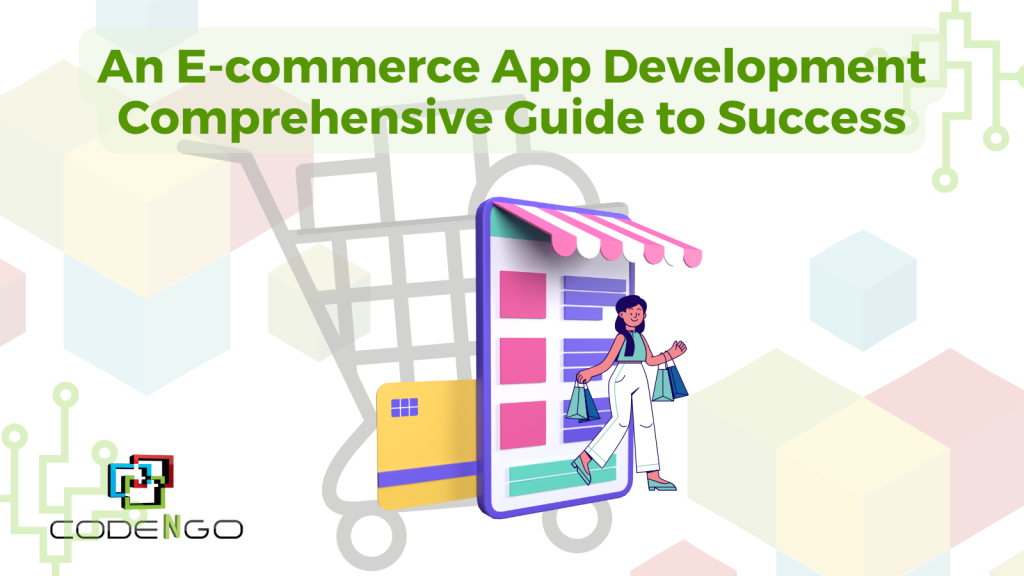E-commerce App Development: Crafting a thriving e-commerce app in the digital age demands meticulous planning and execution. Explore this comprehensive guide as we delve into the crucial steps for creating an app that not only attracts but retains customers, ensuring your success in the competitive e-commerce industry.
by Liz Rustia
E-commerce apps have become essential tools for businesses looking to tap into the vast online market. In an era where convenience and accessibility are paramount, a well-designed and user-friendly e-commerce app can significantly enhance your brand’s presence and customer engagement. This article will not only guide you through the development process but also offer insights into optimizing user experience, security, and performance to stay ahead in this dynamic landscape.

Here’s a step-by-step guide to help you create a successful e-commerce app:
Market Research and Planning
Before diving into development, take the time to conduct thorough market research. Identify your target audience and niche. Analyze your competitors and their apps to understand what works and what doesn’t. Define your app’s unique selling points (USPs) and create a comprehensive business plan outlining your goals, revenue model, and budget.
Selecting appropriate technology
For retail eCommerce mobile applications, there are two types of platforms, i.e., Progressive Web Apps and Native Apps.
The PWAs offer the same surfing speed, interaction, and performance as a native app, but without getting downloaded from the AppStore. These apps are a great option for businesses that have high traffic on their sites from mobile phones and also budget-wise.
The Native Apps are the ones that are needed to be downloaded from the AppStore. These apps are developed to operate separately for Android devices and iOS devices, while the PWAs can be operated on both iOS and Android devices. As the native apps are downloaded, they have granted access to the customers’ mobile phones.
User Experience (UX) Design
The user experience is paramount in e-commerce. Your app’s design should be intuitive and user-friendly. Prioritize responsive design to ensure a seamless experience on various devices, including mobile, tablet, and desktop. Make navigation easy, incorporate robust search functionality, and create a checkout process that feels effortless. High-quality visuals and images for your products are a must to engage and convert users.
Backend Development
Choose a reliable e-commerce platform or consider building a custom solution tailored to your unique needs. Security is crucial in the e-commerce industry, so implement secure user authentication and payment processing. Ensure that your app is optimized for scalability to handle traffic spikes during peak periods.
Product Catalog Management
Create a structured database for your products, categories, and attributes. Implement an efficient search and filter system to help users find what they’re looking for quickly. Allow users to view detailed product information, high-resolution images, and honest reviews from other customers.
Shopping Cart and Checkout
A smooth shopping cart experience and a frictionless checkout process are essential. Implement a user-friendly shopping cart that retains items until the user is ready to purchase. Offer various payment options, such as credit cards and digital wallets, and prioritize the security of user payment information. Provide clear order confirmation and tracking information.
Security
Security should be at the forefront of your app’s development. Prioritize the protection of user data, especially payment information. Implement SSL encryption and stay vigilant about regularly updating and patching any security vulnerabilities.
Performance Optimization
Users expect fast-loading times and a responsive app. Optimize your app’s loading times and responsiveness. Use a Content Delivery Network (CDN) to ensure swift content delivery. Minimize the number of HTTP requests and reduce image sizes to keep your app agile.
Mobile Optimization
As mobile usage continues to rise, consider creating a dedicated mobile app that offers a seamless experience. Implement mobile-specific features like push notifications and location-based services to enhance user engagement.
Feedback and Reviews
Encourage users to leave product reviews and ratings. Feedback is invaluable for both improving your app and enhancing your customer service. Address user inquiries and issues promptly to build trust and loyalty.
Marketing and Promotion
Develop a comprehensive marketing strategy to attract and retain users. Utilize social media, email marketing, and search engine optimization (SEO). Consider forming partnerships and engaging in affiliate marketing to expand your reach.
Analytics and Monitoring
Implement analytics tools to track user behavior and app performance. Leverage data-driven insights to make informed decisions and improvements. Regularly monitor your app’s performance and user engagement.
Customer Support
Offer responsive customer support through multiple channels, such as email, chat, and phone. Promptly address user inquiries and issues to enhance the overall customer experience.
Continuous Improvement
Building a great e-commerce app is an ongoing process. Regularly update the app with new features and improvements. Pay close attention to user feedback and stay abreast of market trends to ensure the long-term success of your app.
Legal and Compliance
Ensure that your app complies with all relevant laws and regulations, particularly those related to data privacy and e-commerce. Compliance is crucial for building trust with your users.
Testing
Before launching, thoroughly test your app for bugs and usability issues. Consider conducting beta testing with a group of users to identify and address any issues before the official launch.
Launch and Promotion
Plan a well-executed launch strategy to generate excitement and interest. Consider offering special promotions or discounts during the launch period to entice users to try your app.
Feedback Loop
Maintain an ongoing feedback loop with your users. Continuously gather feedback and use it to make informed decisions and updates to your app. Listening to your users can be the key to sustained success.
In conclusion, building a great e-commerce app requires careful planning, dedication, and a customer-centric approach. By following these steps and continuously improving your app based on user feedback and market trends, you can create an app that not only meets but exceeds customer expectations, driving long-term success in the competitive world of e-commerce.
Share this article on